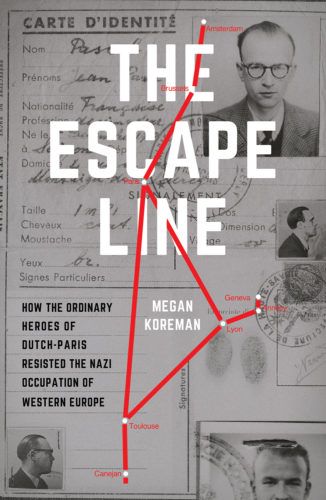Searching for the Dutch-Paris Escape Line
The war impelled all sorts of people to extraordinary acts, not least of them mothers. Take, for instance, the wife of the Dutch consul general in the Vichy zone of France. Madame, as we’ll call her, had four daughters but consistently refused opportunities to leave occupied Europe with them on the grounds that it was better for the whole family to stay together in times of trouble. Her husband the consul refused to leave on the grounds that, like the captain of a ship, he would not leave until the last Dutch refugee left.
So she kept them together and kept the girls on track in their education as the family moved from Bordeaux to Montauban to Vichy to Toulouse. After her husband was incarcerated in a spa hotel turned into a prison for high-ranking political prisoners such as generals and diplomats, she and the girls stayed in Toulouse. But the French Resistance paid her a visit to suggest that she move because a nearby ammunition factory was going to blow up. They went to a farm in the Dordogne. All was well until she received a message that her four children were going to be taken to Germany because her husband’s work helping Dutch refugees was continuing despite his imprisonment (thanks to John Weidner, among others).
Alarmed by this, she made a clandestine journey to Vichy by cover of night. There Madame, who was a devout Protestant, spoke to the Papal Nuncio, whom she had met before the war in Paris. The Nuncio invited Pierre Laval, the premier of the French State, better known as Vichy, to dinner the next night. And in the morning he told Madame that the rumor was true: her children were going to be taken to Germany.
The time had finally come to allow the girls to flee. Madame contacted her many friends in the Dutch resistance in France. A Seventh Day Adventist pastor in Lyon and his wife made false ID cards for the girls in their home and the pastor’s wife arrived at the farmhouse in Dordogne at 3am to escort the older two girls to Lyon. From there they took a Dutch-Paris route through Annecy to Switzerland, where the Dutch consul made arrangements for their lodging and education. When they had safely arrived, the younger two girls left by the same route. Walking through the snow to Switzerland in the cold January of 1944 was hardest on the youngest girl, who was only 12, but they made it.
Madame stayed in the town near her husband’s prison until the liberation of Paris caused his release and they both returned to Paris. When the consul general flew to London on the Dutch government-in-exile’s orders, his wife traveled to Switzerland to stay with the girls until they could all return to the Netherlands in 1945.
- Tags: Border Crossings, France, Switzerland, women


Leave a reply